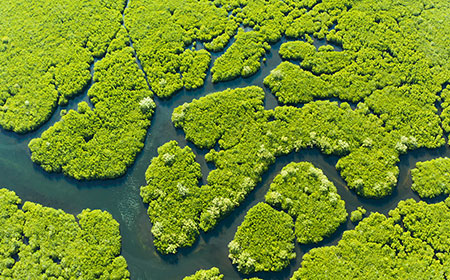A Better Blueprint for Corporate Climate Scenario Analysis is a six-step approach to assessing different potential future climate-related risks and opportunities.
Climate change is immensely complex, and it also brings with it great uncertainty. As an existential threat to all sorts of business processes, climate change has begun to feed into scenario analysis. Since the beginning, the Task Force on Climate-related Financial Disclosures (TCFD) has emphasized the value of scenario analysis, and it has played a leading role in driving their adoption.
Today, scenario analysis is a widely accepted tool for businesses to envision and disclose potential long-term impacts of climate change alongside other risks and to identify ways to shape responsive strategies to those potential impacts.
Evolving stakeholder expectations around climate action impact companies both internally and externally. Regulations related to climate performance and disclosure, many rooted in TCFD recommendations, are on the rise globally. As a result, companies are rethinking how they assess climate-related risks and opportunities via scenario analysis.
This report identifies four main challenges with current practices in conducting climate scenario analysis, including most prominently concerns about:
- Leadership: The entire process is often led by mid-level management, and then it “filters upwards.” This can limit the company’s strategic response, as well as the overall financial and practical investment in outcomes that might be seen if the process incorporated the highest levels of management.
- Not all functions engaged: The exercises are often siloed, with core business functions feeling limited ownership of the process. This can hinder impact and influence across the business.
- Scenarios used in a limited way: The scenarios themselves may hinge on assumptions that are not realistic such as assuming the effects of climate change will be linear or predictable. As a result, the company’s real risks, such as sudden, non-linear shifts or tipping points, are not accurately incorporated into the exercise.
- Technical Accessibility: The outputs of a standard climate scenario exercise can be highly technical, making them unlikely to be read and digested by senior company decision-makers. This hurdle could ultimately limit how deeply the process influences company strategy.
Given the urgency of the climate crisis as well as the regulatory demands in relation to it, these challenges cannot be allowed to remain part of the status quo. This blueprint works to address these concerns through deeper stakeholder engagement, the use of narratives, and a clearer articulation of likely ‘real-world’ business impacts stemming from climate change.

The time is right for a fresh mode of climate scenario analysis that meets growing expectations to improve c-suite engagement on climate topics. Our better blueprint overcomes the limitations of current practice, providing a way forward for decision makers and stakeholders unsatisfied with their experience of climate scenario analyses to date and setting a precedent for how future scenario analysis will be conducted.
Download the report






